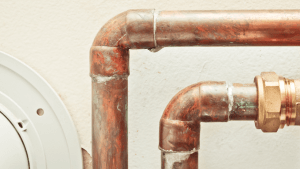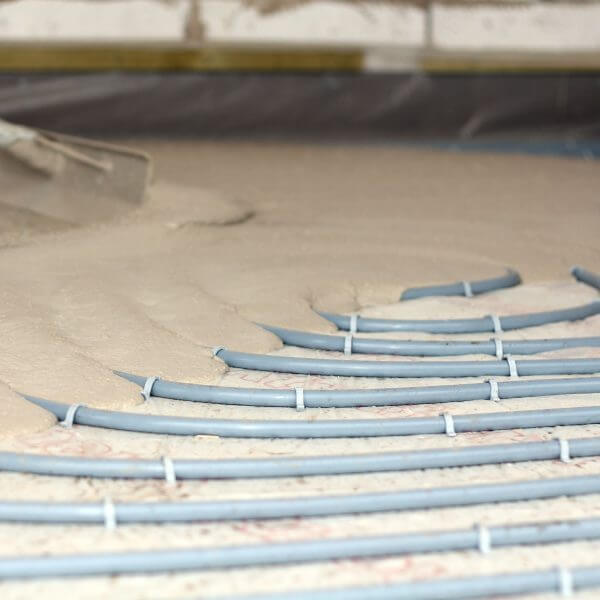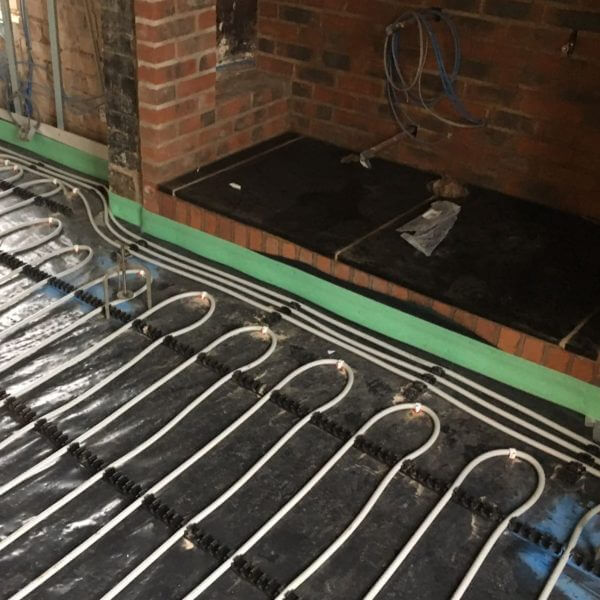Do Wet Underfloor Heating Pipes Leak? Floor Heating Myths Explained
Nobody wants to invest in a new system that breaks down and results in expensive repairs. Many business owners and property developers sit on the fence when deciding if water underfloor heating is right for them because of concerns like this.
Many are familiar with having to call plumbers because of leaks in radiators or water pipes, which can result in invasive repairs across a building. Therefore, it’s no surprise that they believe this will happen with hydronic floor heating, one of the most efficient underfloor heating setups. One particular concern is that underfloor heating is more likely to leak than radiators. But is this truth or a myth?
The truth is that, thanks to EasyFlow’s specially designed system, leaks are far less likely to happen. Here are the most common reasons why heating leaks occur, and what we do at EasyFlow to ensure the longevity of the systems we build.
How Do Regular Heating Leaks Occur?
In radiator setups, water pipes connect between the boiler and the radiator in copper or specialist plastic pipes. These pipes connect in stiff and straight layouts. As the pipe network travels between rooms, connects to appliances, or changes directions to navigate the building structure, a joint needs to be made.

Joints are the primary locations where leaks in water pipes occur in traditional heating layouts. As the pipes expand and contract with use across the years, the soldering or adhesive that seals the joints breaks down, depending on the quality of installation. Cheap plastic pipes are often worse, as they are more likely to become brittle and crack with age.
How Water Underfloor Heating Works
In an efficient underfloor heating setup, instead of traditional pipes, hot water flows through flexible plastic pipes specially designed for heating. These cable-like pipes can be up to 110 metres long, and are referred to as loops, as they are laid in looping patterns to evenly distribute heating.
While there is technically more piping in a hydronic setup, this doesn’t massively increase the underfloor heating installation cost, nor does it increase the risk of leaking if installed correctly. That is because the number of joints is significantly lower and can be localised in an easy-to-access area with a special component called a manifold.
What is an Underfloor Heating Manifold?
A water underfloor heating manifold is the central hub that distributes hot water from the boiler to every loop in the heating setup. For each loop, there is a flow and return, and the manifold itself is segmented so that cold water from return loops is fed back to the boiler.
If the underfloor heating setup is designed correctly, the only joints in the underfloor heating setup are in this area and between the boiler. As each loop pipe can be up to 110 metres long, it is simple to install loops continuously without any breaks or joints.
At EasyFlow, we always design loops to be continuous without any joints until it reaches the manifold. We also strive to place the manifold in a strategic location in relation to the boiler, so that it can be accessed for maintenance. If a problem should ever occur, it should be localised to the manifold area.
Efficient Underfloor Heating Leak Myths
Of course, there are situations in which underfloor heating can leak directly from continuous loops. In our experience, the majority of these are the result of cutting corners in hopes of lowering the underfloor heating installation cost, or poor care of the system after installation. Here are some common misconceptions associated with leaks:
Pipes will crack if there is too much weight on them
This is only true in very rare circumstances. A typical loop pipe has the compressive strength of 30 tonnes per m². Unless you install heavy machinery directly over your heating, you are unlikely to exceed this weight limit.
At EasyFlow, we only use quality loop pipes designed for underfloor heating and would not normally lay heating where heavy machinery exceeding 30 tonnes is expected to be placed. You would only encounter pipes cracking from typical weight loads if you were to hire a low-quality installer who did not use the correct pipes.
Pipes can leak because they are easy to puncture
Standard wear and tear of a heated floor would not make it prone to being punctured. Underfloor heating pipes may not as strong as copper, but are flexible and guaranteed to last up to 50 years.
However, the standard loop pipe can be punctured by sharp objects at sufficient force, such as a hammer and nail. This is not usually a problem for loops protected in a floor screed, or under insulation boards if you opt for a setup with a lower underfloor heating installation cost. No matter the case, avoiding punctures is a matter of exercising caution when carrying out further improvements to your building.
Loop Pipes crack from thermal expansion or moisture
This is unlikely. In events where floor screeds cracks from excessive moisture or thermal shock, there is a small risk that a pipe can crack with it. However, this event would only occur with poor installation and design of your heating, or poor aftercare post-installation.
EasyFlow’s underfloor heating installers design and lay flooring to prevent moisture or thermal expansion issues. We also explain how long to let your screed dry, and how to heat up your system for the first time to prevent any problems.




Where To Find Us